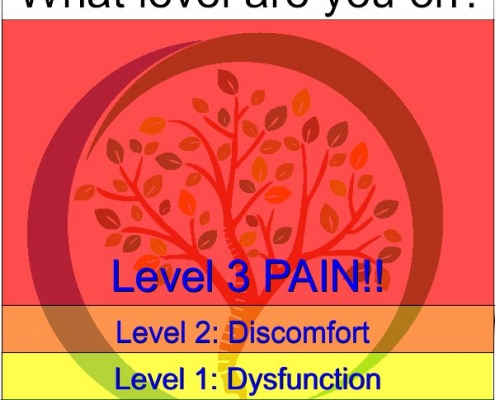Maigne’s Syndrome
Maigne’s syndrome, also known as thoracolumbar junction dysfunction (TLJD), is a condition characterized by pain in the lower back, pelvis, and surrounding areas due to dysfunction in the junction between the thoracic spine (upper back) and lumbar spine (lower back).
The natural history of Maigne’s syndrome isn’t fully understood, but here’s what we know:
Onset and Symptoms:
- Maigne’s syndrome can affect people of any age, although it’s more commonly diagnosed in adults between 30 and 50 years old.
- The most common symptom is pain in the lower back, often on one side, and may radiate to the buttocks, groin, hip, or even the lower abdomen and genitals (referred pain).
- The pain may be described as dull, aching, or sharp and can worsen with certain movements like bending, twisting, or prolonged sitting.
- Other symptoms might include stiffness in the lower back, difficulty maintaining good posture, and localized tenderness in the thoracolumbar junction area.
Course of the Disease:
- Maigne’s syndrome can be acute (lasting less than 3 months) or chronic (lasting longer than 3 months).
- Acute Maigne’s syndrome often resolves on its own within a few weeks with proper care.
- Chronic Maigne’s syndrome can have a fluctuating course with periods of flare-ups and remissions.
Factors Affecting Natural History:
- The underlying cause of the dysfunction in the thoracolumbar junction plays a significant role in the course of the disease. Some possible causes include:
- Muscle imbalances or tightness in the back muscles
- Joint dysfunction in the facet joints or sacroiliac joints
- Poor posture or repetitive strain on the spine
- Trauma or injury to the thoracolumbar region
- Early diagnosis and treatment can significantly improve the natural history.
Treatment and Management:
- Treatment focuses on pain relief, improving joint mobility and flexibility in the thoracolumbar junction, and addressing underlying postural or muscle imbalances. This might include:
- Manual therapy techniques like massage, mobilization, and manipulation
- Physical therapy to strengthen core muscles, improve flexibility, and address postural issues
- Acupuncture or other alternative therapies may be helpful for some patients
- Pain relievers like over-the-counter medications or prescription drugs in some cases
- In severe cases, injections (corticosteroids) into the affected area may be considered.
Long-Term Outlook:
- Maigne’s syndrome can often be managed effectively with conservative treatments.
- Early diagnosis and treatment are crucial for preventing recurrent pain and maintaining a good quality of life.
- While there’s no cure for the underlying dysfunction, most patients experience significant improvement in symptoms with proper management.
Resources:
Disclaimer: This information is intended for general knowledge only and should not be a substitute for professional medical advice. Always consult with your doctor for diagnosis and treatment of Maigne’s syndrome.




 Envato Elements
Envato Elements







